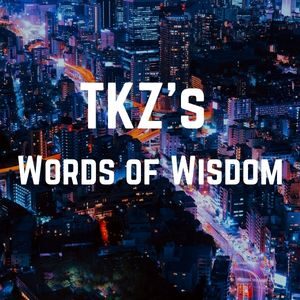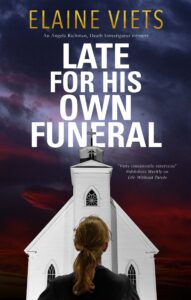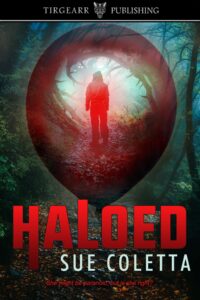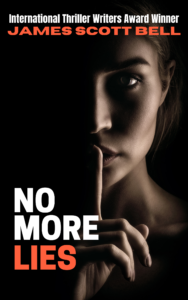“Truth is the daughter of time.” – Francis Bacon

Several months ago, I posted The History of Mystery on the Kill Zone blog, and I listed twelve examples of novels and authors that represented important milestones in the history of the genre. In his comment on that post, Dale Ivan Smith mentioned a book I had not considered: The Daughter of Time by Josephine Tey. Dale pointed out that Ms. Tey’s novel had some very prestigious acclaim: In 1990 it was voted number one in The Top 100 Crime Novels of All Time list compiled by the British Crime Writers’ Association.
Of course, with that endorsement, I had to read the book, and I was captivated by it. So much so that I asked Dale if he would co-write this post with me, and I’m deeply grateful that he agreed. Without further ado, join us in the Court of Literary Criticism as we examine two aspects of The Daughter of Time, a mystery of history.
SCENE I: THE COURTROOM
The judge banged her gavel, and the room fell silent. She allowed her gaze to slowly sweep across the crowded courtroom until every eye was firmly focused on her.
“It is said that truth is the daughter of time,” she announced in a commanding voice. She turned her head and peered over the rims of her glasses at the two people in the jury box. “Dale Ivan Smith and Kay DiBianca, you have been appointed to decide two issues related to this proverb.
“First, is Josephine Tey’s mystery, The Daughter of Time, truly the greatest crime novel of all time?
“Secondly, as discussed at length in the novel, is King Richard III of Great Britain guilty of the murder of his nephews Edward and Richard, also known as the Princes in the Tower?“
Then she read a summary of the book for the edification of the court.
“The Daughter of Time is an ambitious novel that begins quietly, with Scotland Yard Inspector Alan Grant laid up in a hospital while recovering from a fall and unable to leave his bed. Failing to find books to entertain him, Grant is bored and irritable. But when his actress friend Marta presents him with a stack of images of various people, his talent for analyzing faces is aroused.
“He settles on a picture of a medieval prince and discovers it to be Richard III. He then begins to read about the monarch and his alleged murder of his nephews.
“Aided by a young American scholar, Grant begins a deep dive into the events surrounding the episode and concludes that Richard III was innocent of his nephews’ murder. He theorizes that the boys lived into the early 1500s and were murdered in secret on the orders of Henry VII, the man who became king after Richard III was slain at the Battle of Bosworth Field in 1485.”
The judge took off her reading glasses and addressed the two jurors. ”You may deliberate as long as you like. Please report back when you’ve accomplished your reading assignment and reached your verdicts.”
SCENE II: THE JURY ROOM
Kay: Okay. I read the book twice. How should we go about analyzing its quality?
Dale: I also read the book twice. Why don’t we list the various criteria we will judge the book on and write our opinions under each one?
The Setting
Kay: The entire novel takes place inside a hospital room. In that way, it reminded me of Rear Window which also takes place in one room. Did the author succeed in keeping your interest?
Dale: Yes. The hospital setting for the novel was literally the classic white room, but Tey infused it with detail, mainly by keeping us close to Grant, POV-wise, so that we were right there with him at all times as he lay in bed and stared at the cracks in the ceiling, listening to the sounds outside his room, and later, surrounded by books.
The Structure
Dale: The novel’s structure is one of its greatest strengths. Once Alan Grant begins his investigation from his hospital bed, the story unfolded, to my mind, like the classic murder mystery plot, with unexpected developments, setbacks, and even a ticking clock as time ran out. What did you think of the novel’s structure? Did you find it effective?
Kay: I liked Tey’s use of a story within a story. Although that’s not unique, investigating a historical event within a fictional book was particularly appealing to me.
The Characters
Kay: There were two sets of characters in this book: the fictional characters of Alan Grant and those around him, and the historical characters that include Richard III, Sir Thomas More, William Shakespeare, and others. I had a little trouble keeping up with all the historical Elizabeths, Henrys, and Georges, but I thought the fictional characters were well-constructed and engaging.
Dale: The fictional characters of Grant, Marta, Brent Carradine, and others were vividly drawn, especially through dialogue, and each was distinctive. The way she zeroed in on the mystery, starting with Richard III and the princes, and then moved through the numerous Woodvilles and other personages, let the reader become familiar with each. She kept her focus on Grant and Carradine’s views of these personages, with Grant’s detective inspector’s view of human nature bringing a pragmatic angle to how those people were viewed.
The Investigation
Dale: Tey was convincing in how she portrayed Grant and his investigation, which looked at who had motive for the murder other than Richard, and who stood to most benefit. His dogged determination to follow the investigation to wherever it led fit his modern detective’s mindset and approach.
Kay: The portrayal of Grant’s use of modern detective methods to investigate the alleged crime was clever and well done.
The Criticism of History Books
Kay: Josephine Tey went beyond the determination of Richard III’s culpability. Her real message was about the fallibility of history writings. Some of the examples that she wove into the story were eye-popping. Had you ever heard about Tonypandy before?
Dale: I had not heard of Tonypandy before. It was a terrific illustration of how historical myths arise, and how they can form narratives that serve those in power. By the same token, as someone with a degree in history, I found Grant’s depiction of Sir Thomas More’s historical account of the murders as biased and flawed a bit problematic, though great fun. I did enjoy Grant’s embrace of primary sources, and uncovering them with Carradine’s help was more exciting then I would have imagined.
Josephine Tey’s Style
Dale: Tey is a superb writer, with an evocative narrative style that brought the story to life. The dialogue is precise and equally evocative. An example taken at random: Grant, “If your two sons had been murdered by your brother-in-law, would you take a handsome pension from him?”
Kay: I admire Tey’s prose. One particularly amusing description of Mrs. Tinker leaving the hospital room: “When she had gone creaking away, in a shoes-and-corset concerto …”
***
Dale: I guess we’ve covered all the bases, and it’s time to report back to the judge. Are you ready?
Kay: Yes. Let’s go.
SCENE III: THE COURTROOM
Judge: Members of the jury, Dale Ivan Smith and Kay DiBianca, what is your verdict? Is The Daughter of Time the best crime novel ever written?
Dale: I can not declare it to be the best crime novel ever written, but it is certainly one of the very finest ones, for the way in which it unravels an ancient mystery, and the way it shows the police mindset being applied to solving that mystery.
Kay: How can you compare The Daughter of Time with Agatha Christie’s And Then There Were None or Raymond Chandler’s The Big Sleep? All three books tell vastly different stories, but In each case, the style matches the narrative. Having said that, Tey’s novel deserves special consideration since it challenges the reader to discern truth out of the cacophony of information and misinformation we encounter in our lives. For me, that elevates The Daughter of Time to the #1 position. (Besides, I thought the title was brilliant.)
Judge: And how do you find the defendant, King Richard III? GUILTY or NOT GUILTY?
Dale: I find Richard III GUILTY as charged. My own research revealed that Sir Thomas More spoke with the sons of one of the alleged murderers, Miles Forest, using that as a the basis for his account. Both sons rose to very important positions in the Tudor court. Moreover, Richard III faced a serious rebellion in 1483 by supporters of young Edward IV, so he had additional reason to have the two princes put away, permanently. The politics of that age could be ruthless, and Richard III was very much a product of that time.
Kay: I find Richard III NOT GUILTY. There are other plausible explanations for the deaths of the two princes, and there is simply not enough evidence to prove Richard III’s guilt beyond a reasonable doubt.
Judge: Thank you, members of the jury, for your service. You are hereby dismissed.

“The one who states his case first seems right, until the other comes and examines him.” – Proverbs 18:17
So TKZers: Have you read The Daughter of Time? What novel would you recommend as the best mystery ever? Do you have an opinion on the validity of history books? Do you think Richard III is guilty or not guilty?

 There’s an old joke about a guy walking into a bar with a squirrel in a cage. The bartender says, “What’s that squirrel doing here?” And the guy says, “Thinking about his next mystery.” The bartender asks what he means, and the guy says, “My squirrel is a mystery writer.”
There’s an old joke about a guy walking into a bar with a squirrel in a cage. The bartender says, “What’s that squirrel doing here?” And the guy says, “Thinking about his next mystery.” The bartender asks what he means, and the guy says, “My squirrel is a mystery writer.”
 Goals are important. Goals keep us on track and moving forward.
Goals are important. Goals keep us on track and moving forward.

 She may be paranoid, but is she right?
She may be paranoid, but is she right? There’s a great Far Side cartoon (among so many great ones from the genius Gary Larson). It shows the back of a man seated at a desk. He has a pencil in his fingers, but his hands are grabbing his head in obvious frustration. In front of him are a series of discarded pages with MOBY DICK, Chapter 1 at the top. They say:
There’s a great Far Side cartoon (among so many great ones from the genius Gary Larson). It shows the back of a man seated at a desk. He has a pencil in his fingers, but his hands are grabbing his head in obvious frustration. In front of him are a series of discarded pages with MOBY DICK, Chapter 1 at the top. They say: